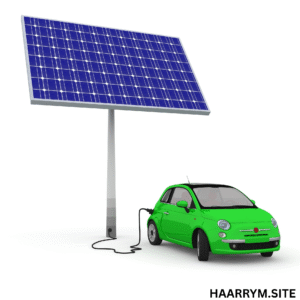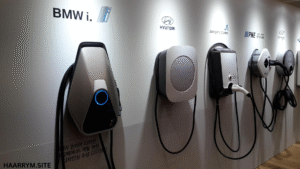Many homes and companies are choosing renewable energy sources in the modern world, when environmental issues are more critical than ever and energy prices are skyrocketing. Among the most often used remedies is the solar charger designed for inverter systems. Apart from lowering reliance on the grid, these chargers provide a constant and environmentally beneficial power source.
Understanding how a solar charger for an inverter operates—and how to choose the correct one—can make all the difference whether your house, business, or even an RV needs electricity. From their operation to the greatest models presently, this thorough guide will cover everything you need to know about solar chargers for inverters.
What is a Solar Charger for Inverter?
A solar charger for inverter is a gadget that controls the electrical flow from a solar panel to the battery, therefore running an inverter. To run domestic appliances and other devices, the inverter converts DC (direct current) from the battery into AC (alternating current).
Simply said, the solar charger serves as a middleman, controlling the current from your solar panels to provide safe, effective battery charging—which subsequently powers your inverter and house.
.
Why Use a Solar Charger for Inverter Systems?
There are several advantages to integrating a solar charger into your inverter setup:
✅ 1. Efficient Energy Use
A solar charger ensures that the solar energy collected is properly managed and stored without overcharging or damaging the battery.
✅ 2. Protects Your Battery
Solar chargers come with overcharge, overload, and short circuit protections. This extends the life of your battery, saving you money in the long run.
✅ 3. Eco-Friendly
By harnessing solar power, you’re significantly reducing your carbon footprint and contributing to a greener planet.
✅ 4. Cost-Effective
Once installed, solar energy is free. Over time, this results in significant savings on electricity bills.
✅ 5. Off-Grid Capability
Solar chargers allow you to operate entirely off-grid, which is especially useful in remote areas or for RV and camping use.
How Does a Solar Charger for Inverter Work?
The system typically includes:
-
Solar Panels: These collect sunlight and convert it into DC electricity.
-
Solar Charge Controller: This regulates the voltage and current from the solar panels to the battery.
-
Battery Bank: Stores energy for later use.
-
Inverter: Converts DC from the battery to AC to run appliances.
The solar charger or charge controller is the brain of the system. It manages how much energy goes into the battery and ensures the battery doesn’t overcharge or undercharge, which could otherwise lead to inefficiencies or damage.
Types of Solar Chargers for Inverters
There are two primary types of solar charge controllers used with inverters:
🔹 1. PWM (Pulse Width Modulation) Solar Chargers
-
Budget-friendly
-
Good for small systems
-
Less efficient in converting solar energy
-
Ideal for users with limited power needs
🔹 2. MPPT (Maximum Power Point Tracking) Solar Chargers
-
Highly efficient (up to 98%)
-
Ideal for larger systems
-
More expensive but faster charging and better power management
-
Best suited for areas with variable sunlight
MPPT solar chargers are generally recommended for those looking for maximum performance, especially if you’re powering a home or office through solar.
Key Features to Look for in a Solar Charger for Inverter
When shopping for a solar charger, consider the following features:
🔋 1. Voltage Compatibility
Make sure the charger supports the voltage of your solar panel and battery bank (12V, 24V, or 48V).
🧠 2. Smart Charging Technology
Modern solar chargers come with smart charging modes to optimize charging based on battery type (Li-ion, Lead-acid, AGM, Gel).
⚡ 3. Load Control
Some solar chargers offer load terminals where small devices can be connected directly—ideal for simple lighting setups.
📊 4. Display and Monitoring
An LCD screen or mobile app to track input voltage, output, battery status, and error messages helps in monitoring system performance.
🌧️ 5. Weatherproofing
If the system is used outdoors (like on an RV), ensure the charger is IP-rated against dust and water.
Best Solar Chargers for Inverter Systems in 2025
Here are some top-rated options based on customer reviews and performance:
🔹 Renogy Rover 40A MPPT Solar Charge Controller
-
Compatible with 12V/24V systems
-
High tracking efficiency of up to 99%
-
LCD screen and Bluetooth module for app monitoring
-
Ideal for medium to large solar setups
🔹 Victron SmartSolar MPPT 100/30
-
Offers smart Bluetooth monitoring
-
Compatible with multiple battery types
-
Adaptive charging and temperature compensation
-
Top choice for reliability and performance
🔹 EPEVER MPPT Solar Charge Controller 40A
-
Versatile and supports up to 100V input
-
Great for off-grid and hybrid systems
-
Optional PC software for advanced configuration
🔹 ALLPOWERS PWM 20A Solar Charger
-
Budget-friendly and ideal for small systems
-
LED indicator for battery and charge status
-
Overload and short-circuit protection
Installation Tips for Solar Charger with Inverter
Proper installation is crucial for efficiency and safety. Here are a few tips:
-
Follow Polarity: Always match the positive and negative terminals correctly.
-
Use Proper Gauge Wires: Choose wires that can handle the current load without overheating.
-
Place Controller Near Battery: This reduces voltage drops and increases charging efficiency.
-
Ground Your System: Ensure the entire system is grounded to prevent electrical faults.
-
Consider a Professional Installer: For large or complex setups, a licensed installer is recommended.
Solar Charger for Inverter in Home Use
In home solar setups, a solar charger is typically integrated into a hybrid inverter, which can manage both solar input and grid electricity. This system:
-
Charges batteries using solar energy during the day
-
Powers home appliances via inverter
-
Uses grid power as backup at night or during cloudy days
Hybrid systems with MPPT solar chargers are the most efficient solution for households.
Solar Chargers for Inverter in RVs and Boats
Solar chargers are also widely used in mobile setups:
-
Keeps your batteries charged while on the move
-
Avoids running noisy generators
-
Essential for long-term boondocking or off-grid living
For RVs and boats, compact MPPT controllers with Bluetooth monitoring are highly recommended.
Common Mistakes to Avoid
-
Undersized Charger: Make sure your charger can handle the total amperage your panels produce.
-
Poor Battery Matching: Always use a battery that matches the voltage and chemistry supported by your controller.
-
Improper Ventilation: Charge controllers generate heat—install them in a ventilated space.
-
Ignoring Firmware Updates: Some smart chargers receive updates to improve performance; don’t skip them.
Cost of Solar Chargers for Inverters
Prices vary widely based on features and size:
-
Basic PWM Chargers: $20 – $60
-
Mid-range MPPT Chargers: $100 – $250
-
High-end MPPT Chargers: $300 – $600+
While PWM controllers are cheaper, MPPTs offer greater efficiency, especially in cloudy or low-light conditions.
Final Thoughts: Is a Solar Charger for Inverter Worth It?
Absolutely. Whether you’re reducing your reliance on the grid, preparing for emergencies, or aiming for full energy independence, a solar charger for inverter system is a smart and sustainable investment.
It enables you to harness the power of the sun efficiently, manage your battery health, and enjoy uninterrupted power supply—be it in your home, RV, boat, or off-grid cabin.
FAQs About Solar Charger for Inverter
❓Can I use a solar panel directly with an inverter?
No. You need a solar charge controller to manage and regulate the current before feeding it to the battery and then the inverter.
❓What size solar charger do I need?
It depends on the wattage of your solar panel and battery voltage. For instance, a 40A charger is suitable for systems up to 520W on 12V or 1040W on 24V.
❓Can I connect multiple solar panels?
Yes, but ensure they’re wired correctly (series or parallel) and within the voltage/amperage limits of your solar charger.
❓What happens if I use the wrong charge controller?
It may damage your battery, reduce efficiency, or even pose a fire risk.

Conclusion
Turning to a solar charger for an inverter system is a wise, responsible decision for everyone trying to save money and promote environmental living—not just a fad. Every budget and energy need may be met from simple configurations to sophisticated MPPT-powered systems.
Would you want a version catered for eCommerce product pages or blog posting, or as a downloaded article (PDF/Word)?
